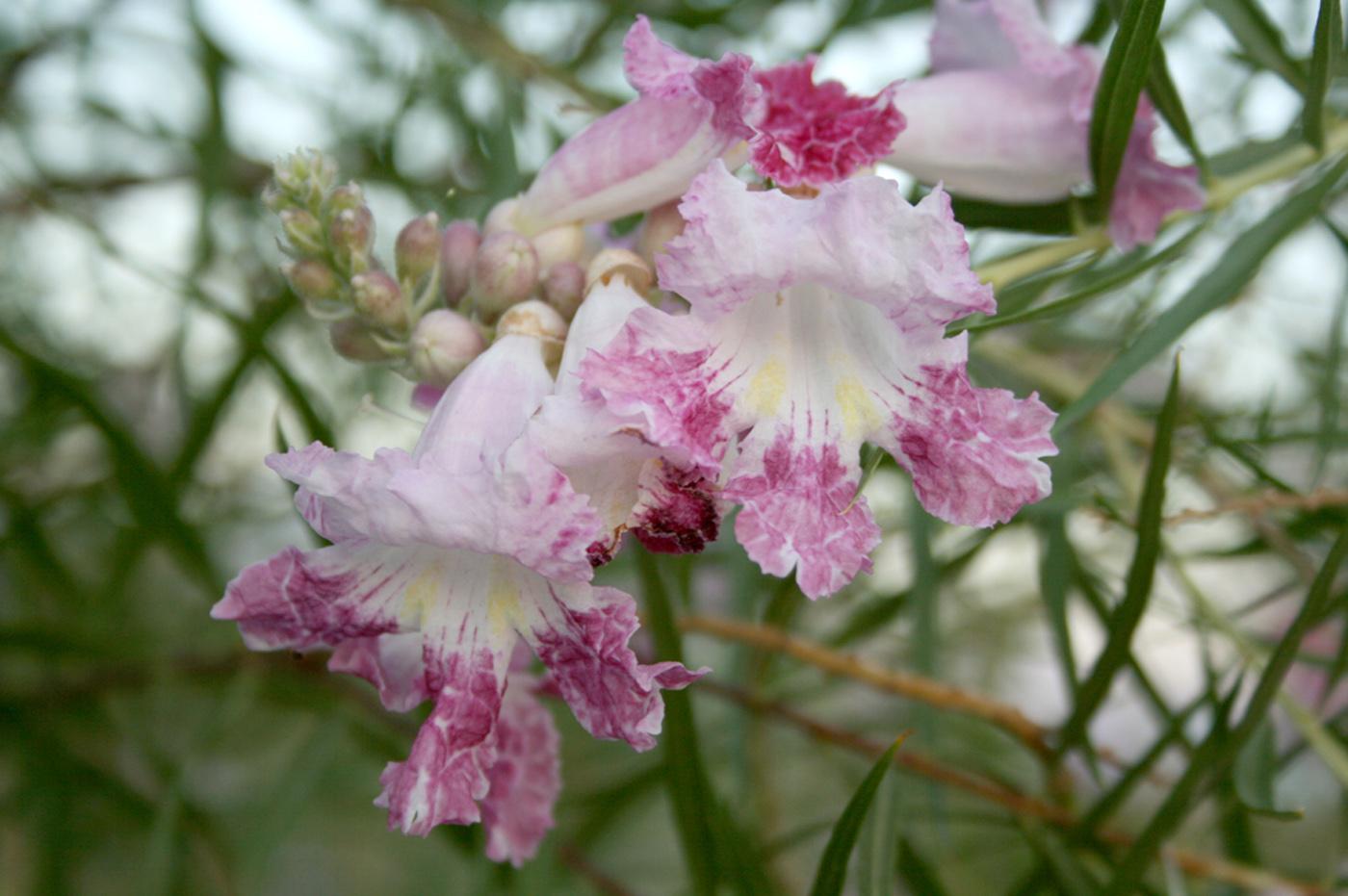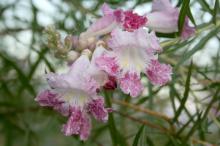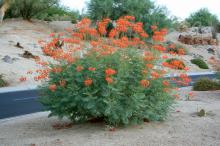Information Possibly Outdated
The information presented on this page was originally released on August 12, 2010. It may not be outdated, but please search our site for more current information. If you plan to quote or reference this information in a publication, please check with the Extension specialist or author before proceeding.
Desert landscapes bloom with efficient irrigation
I spent last week in Palm Desert, Calif., where the daily temperatures were 110 degrees or more and the humidity was less than 20 percent.
The landscapes I saw there are completely foreign to our lush, green gardens. Yet the landscape was quite beautiful, not bleak as I had imagined. There were lots of flowering desert plants, and I quickly realized that one of the first things I needed to get was a desert plant guide.
A couple of the plants showing off were the Pride of Barbados and the desert willow. The flowers of Pride of Barbados, or Red Bird of Paradise, are absolutely beautiful. The terminal pyramidal flower clusters are a bright orange and red with a golden tinge on the petal edges. Each flower has a group of long yellow stamens extending out in a way that reminds me of deciduous azaleas.
The branches are a little prickly and support double compound leaves up to a foot long with many roundish leaflets.
While Pride of Barbados thrives in the desert, I believe it could grow well in our Mississippi landscapes. It is a hardy perennial in zone 8B but can be grown as an annual. Planting in well-drained soil or raised beds is a must.
Butterflies love the gorgeous, orange-red flowers. Pair with butterfly weed for an irresistible combination.
Desert willow is a small tree native to the Southwest. Though not related to willow, its narrow leaves do resemble willow leaves. Trumpet-shaped flowers are borne in showy clusters that vary from pink to pale violet with some red spots. These flower clusters bloom for many weeks in the summer.
While best suited to arid conditions, the desert willow is a fairly easy plant to grow as long as it isn’t overwatered. Any Mississippi gardeners adventurous enough to try them should plant them in raised beds for drainage.
But not all of the plants I saw there were desert plants. Among the familiar landscape plants were beautiful plantings of zinnia, melampodium and annual flowering vinca.
Lantana seemed particularly well-suited to the dry heat, but maybe the biggest surprise was the bougainvillea. These were bougainvillea shrubs, some reaching 10- to 12-feet tall. They reminded me of our azaleas in the spring.
The Palm Desert area only gets about 6 inches of rain each year, making landscape irrigation a necessity. Xeriscaping is widely practiced by grouping together plants with similar water needs. Xeriscaping helps reduce water waste, allowing plants to be watered only as much as required to maintain good plant health.
Gardeners use low-volume irrigation to maintain their landscapes. Even the desert plants in landscape beds benefited from the low-volume irrigation. But whatever the landscape plants, they were always grouped together to facilitate efficient irrigation.
Maybe you have not thought about grouping plants together that have similar water needs in your landscapes. Even in an area like ours that has plenty of water, using landscape water efficiently is a really good idea.











